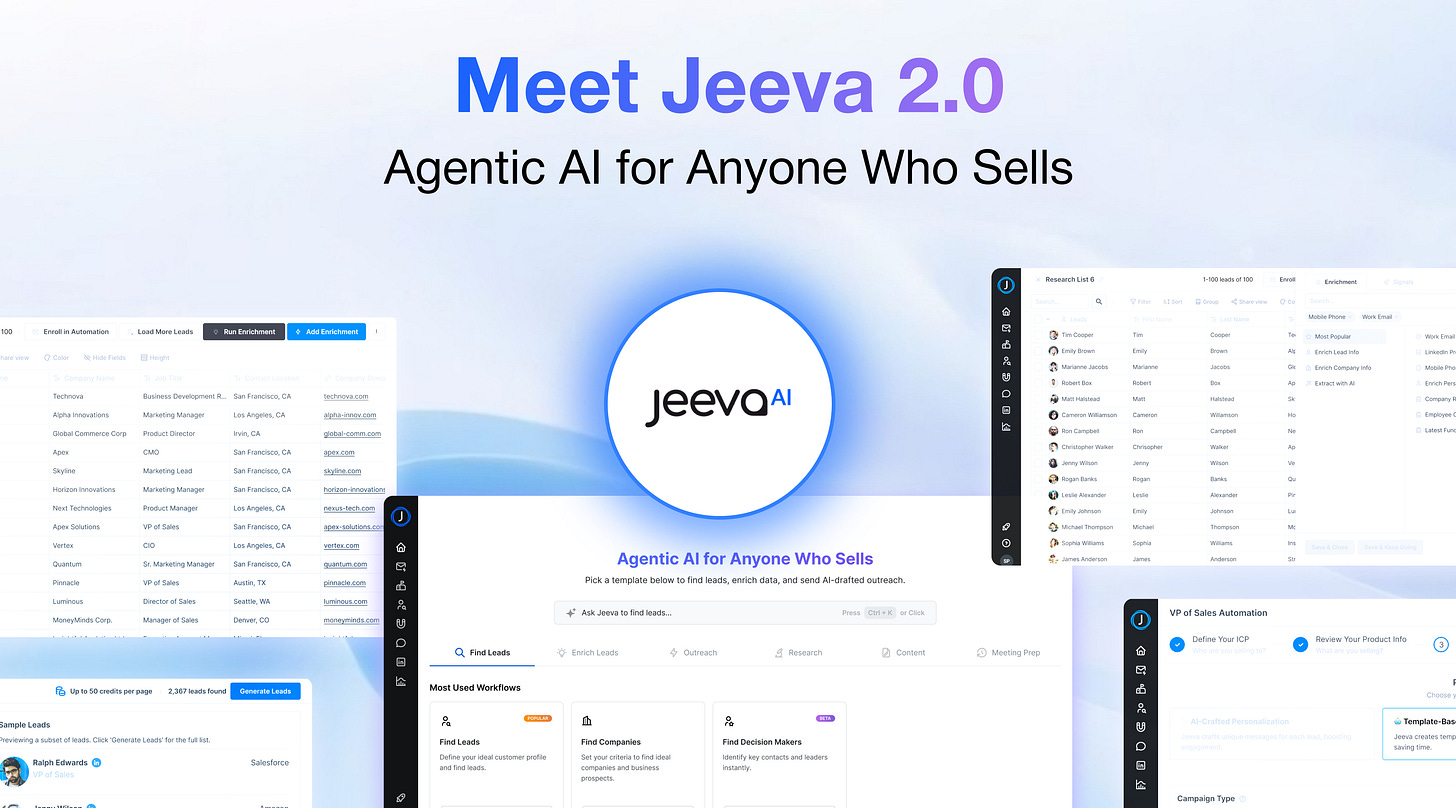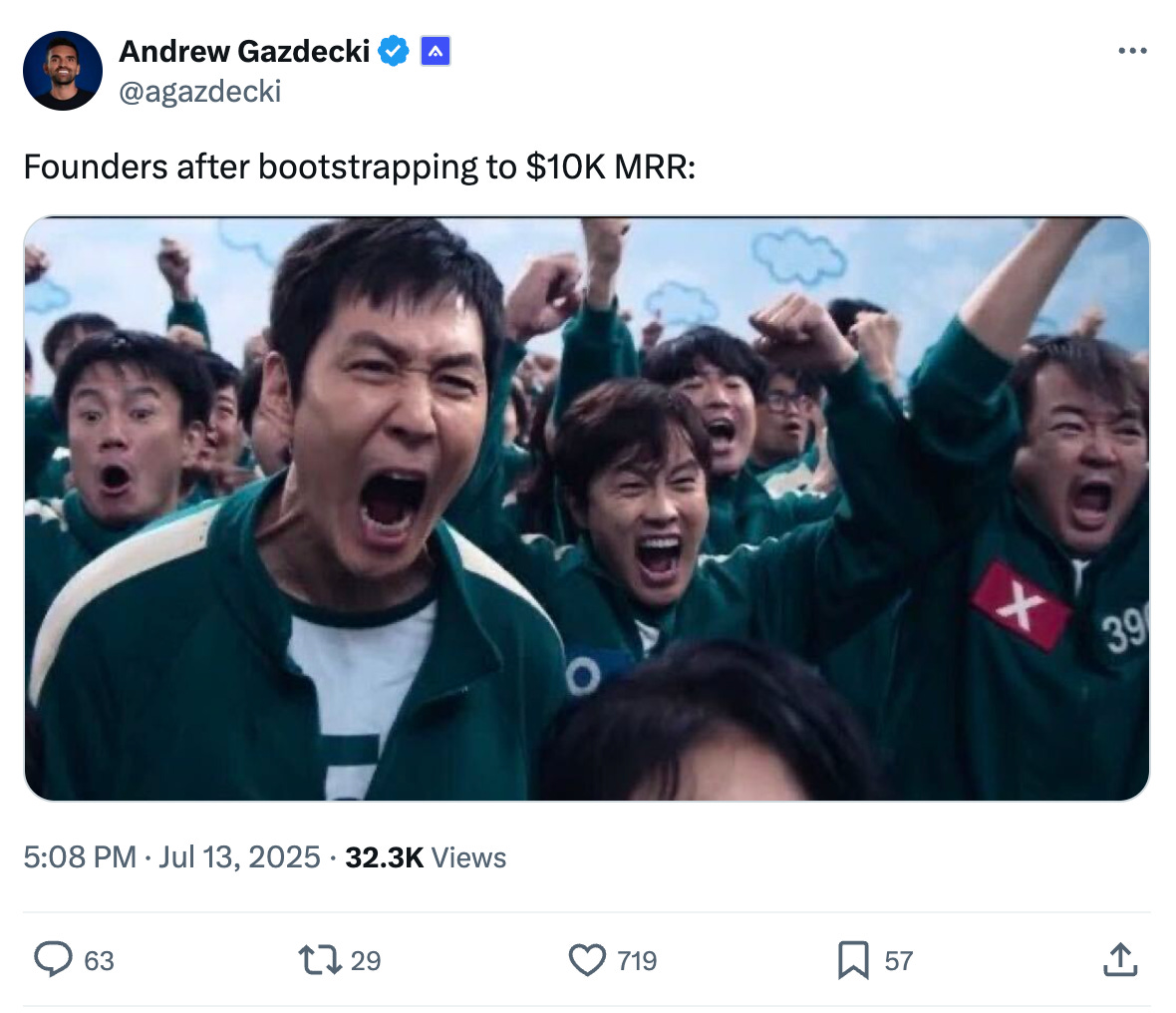Hello 👋
This week we’re talking about taking small exits and why it’s better to take a lot of small swings than go for the home run on when you’re building AI No-Code Startups.
Sponsor ✨
Sell Smart with Jeeva AI
Jeeva.ai is an all-in-one agentic AI platform that automates the entire sales workflow, from finding and enriching leads to multi-channel outreach, meeting prep, and inbox management.
It’s built to help sales teams close more deals with less manual work, replacing multiple tools with one clean, AI-powered workspace.
🔥 No-Code (Small) Exits
Everyone talks about building the next unicorn.
Hitting $10K/MRR milestone.
The “quit your job” moment.
The Product Hunt #1 badge.
Just spend 5 min on X and I’m sure you’ll see one of these posts.
But here’s what no one tells you:
You can quietly sell a no-code project making $50 month, and walk away with $2K–$10K in cash.
All of a sudden an exit seems more attainable.
Why Small Exits Matter More Than You Think
When you hear “exit,” your brain probably thinks:
Big buyers
Legal teams
Multiple six-figures
Acqui-hire drama
I’m talking about:
$100–$1,000/month in revenue
Built in weekends or evenings
Sold for $2K–$30K
To solo buyers, indie founders, or niche agencies
These are micro-exits.
The Math Behind Small Exits
Let’s break it down.
Say you built a directory tool making $100/month in affiliate or ad revenue.
It runs on Softr + Airtable.
You haven’t touched it in 2 months.
Someone comes along, sees potential, and offers $5,000.
You just made 50 months (4+ years) of revenue in one deal.
($100 month x 12 months = $1,200 multiplied by 3x - 5x valuation)
And more importantly:
You cleared mental space
You gained credibility
You funded your next idea
To sell your no-code project, you don’t need:
❌ A giant audience
❌ A $10K/month run rate
❌ A polished product
❌ A full-time commitment
❌ A team
I’ve seen founders exit for $2,000 to $25,000 with:
✅ A few paying users
✅ A clean landing page
✅ A repeatable system
✅ A Loom walkthrough
✅ A Stripe or Gumroad history
It’s not about scale, it’s about proof.
The Buyer's Side of the Deal
Why would someone buy a tiny project?
Simple:
They want to grow it
They want to own a digital asset
They want a head start
They want to learn from something real
They want a business they can sell later
Remember: not every buyer is a VC or startup bro.
Most are indie builders, content creators, niche entrepreneurs.
They don’t want to spend 6 months building.
They want to buy and go.
Real Examples
These aren’t hypotheticals.
Here are just a few real stories from No-Code Exits:
Hazel built a project in 2 weeks using ChatGPT and sold it
Nandha launched a Notion widget tool and sold it for mid–4-figures
Paul built Lettergrowth and exited for low 5-figures in just 4 months
Drew sold a tool directory for under $30K
David sold a pre-revenue quiz game for ~$2K
These were well-built, low-maintenance, sellable assets.
You don’t need to hit $10K/month to cash out.
You just need proof, packaging, and a buyer.
Build to Sell ≠ Build to Burn Out
Here’s the mindset shift:
Instead of building with infinite scale in mind…
Build with finite transferability in mind.
Ask yourself:
Could someone else run this easily?
Would someone value the users, tech, or niche?
Can I document and hand this off in under a week?
If yes, you’re on the right path.
The New Playbook
The smartest founders I know are skipping the go-big-or-go-home model.
They’re stacking small wins.
Exiting fast.
Learning faster.
Getting paid.
Then doing it again better, sharper, cleaner.
Now with AI they are doing it with no team, no funding, and no burnout.
Validate → Build → Sell → Repeat
If you’ve gotten this far, get a sneak peek at what’s coming next. 👀




